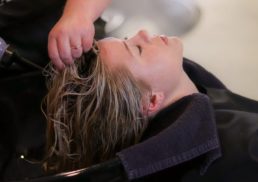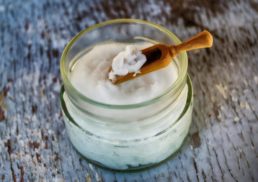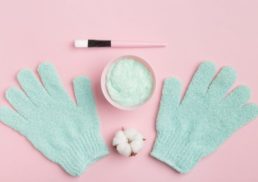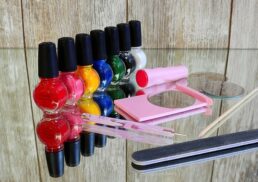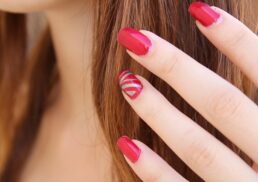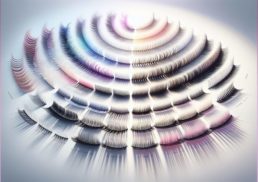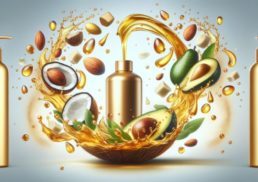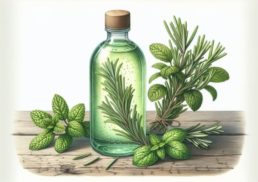Are you tired of the same old hair care routine and looking for a fresh, affordable, and highly effective solution? DIY hair masks might just be the answer you’ve been seeking! These hair treatments, also known as hair masks, are packed with natural ingredients that target your specific hair concerns, leaving your locks looking and feeling healthier than ever. Let’s dive into the world of DIY hair masks and discover the benefits, ingredients, and recipes that will transform your hair care routine.
Table of Contents
Key Takeaways
Transform your hair with powerful DIY hair masks to nourish, hydrate and restore!
Choose the right ingredients for personalized results tailored to suit different types of hair.
Follow expert advice for safe use & optimal results, unleash the power of DIY Hair Masks!
Understanding Hair Mask Benefits
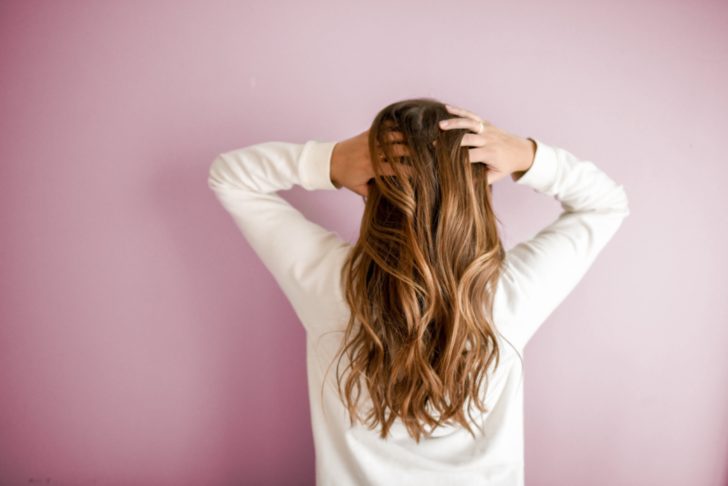
Imagine a hair treatment that nourishes, hydrates, and restores your hair, targeting specific hair concerns and leaving your tresses softer, stronger, and shinier than ever. That’s precisely what hair masks can do for you! These powerful treatments penetrate deep into the hair shaft, providing longer-lasting effects than your everyday shampoo and conditioner. Say goodbye to damaged hair, hair breakage, and dry hair; hair masks are designed to cater to all hair types, from fine hair to coarse hair.
The secret behind the magic of hair masks lies in their intensely nourishing and strengthening properties, which deliver remarkable benefits to your hair cuticle. Hair masks tend to provide optimal results when used one to two times a week in place of your usual conditioner. So, are you ready to give your hair the extra love it deserves?
Choosing the Right Ingredients for Your Hair Type
Crafting the perfect DIY hair mask requires a careful selection of ingredients tailored to your hair type and needs. Hair masks typically contain essential elements like oils for moisture and shine, proteins for strength and repair, and humectants for hydration.
Selecting appropriate active ingredients — like oils for hydration or bond rebuilders for damage repair — enables you to craft a homemade hair mask that caters to your hair’s unique needs, promising astounding results.
Oils for Moisture and Shine
Oils play a crucial role in providing your hair with the moisture and shine it craves. Coconut, olive, and almond oil are just a few examples of oils that can work wonders for your locks. These oils not only nourish and protect your hair, but also add a beautiful shine and moisture that will leave your tresses looking healthier than ever.
Different hair types can benefit from various oils. For curly hair, botanical oils like avocado oil add moisture and definition. In contrast, dry hair can benefit from butters and oils such as shea, coconut oil, argan oil, and avocado oil, which help replenish and restore hair, leaving it looking shiny and healthy.
Proteins for Strength and Repair
Proteins are the building blocks for strong and healthy hair. Incorporating proteins like egg, yogurt, and avocado into your DIY hair mask can help strengthen and repair damaged hair. These proteins not only fortify your strands, but also make them smoother and safeguard them from further harm.
Incorporating proteins into your DIY hair mask gives your hair an additional surge of strength and repair, treating any damage and promoting healthier, more vibrant locks.
Humectants for Hydration
Humectants are substances that help your hair stay moisturized and hydrated. They are often used in hair masks to nourish your hair and keep it looking and feeling healthy. Some of the best humectants to give your hair a nourishing boost include:
Aloe juice
Coconut oil
Honey
Hyaluronic acid
Remember to include humectants while formulating your DIY hair mask to ensure an extra layer of hydration, keeping your hair moisturized, robust, and radiant with a moisturizing hair mask.
DIY Hair Mask Recipes for Common Hair Concerns
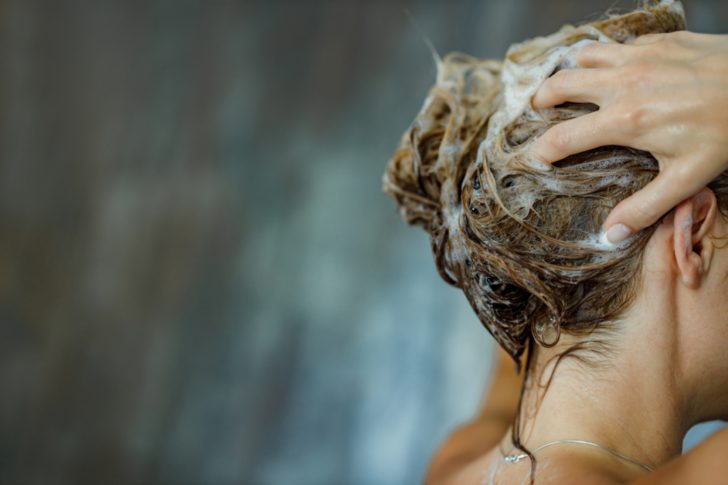
After grasping the benefits and ingredients of DIY hair masks, it’s time to delve into some wonderful recipes addressing common hair issues like:
dryness
damage
thinning
color protection
frizz
scalp irritation
flatness
oiliness
These masks are easy to make at home using nourishing ingredients like coconut oil, avocado, or honey that you may already have in your kitchen. Desire to revolutionize your hair care regimen? Here are some outstanding DIY hair mask recipes!
Moisture Boost for Dry Hair
Dry hair needs a moisture boost, and we have just the recipe for you. A moisture-boosting mask for dry hair can include ingredients like coconut oil, honey, and banana. These ingredients work together to fight brittle hair, nourish, and hydrate, leaving your hair looking and feeling healthier and shinier than ever.
For best results, follow these steps:
Mix half an avocado, 1 tablespoon of nourishing olive oil, 1 tablespoon of hydrating honey, and 3 drops of your favorite essential oil.
Apply the mixture to your wet hair, starting from the bottom and working your way up.
Gather all your hair together and tie it into a tight bun.
Put on a shower cap to protect the bun.
Blow dry your shower cap-covered hair for 10 minutes.
Let it sit for another 20 minutes.
Shampoo your hair.
Strengthening Mask for Damaged Hair
Damaged hair needs extra care, and a strengthening mask made from egg, yogurt, and olive oil can do wonders. These ingredients are packed with vitamins and nutrients that nourish, strengthen and repair damaged hair, making your locks smoother and more resilient.
To make this strengthening mask, follow these steps:
Mix together an egg, half a cup of yogurt, and 1 tablespoon of olive oil.
Apply the mask to damp hair.
Leave it on for 15-20 minutes.
Rinse off with warm water and shampoo to enjoy the full benefits of the mask.
Growth Stimulating Mask for Thinning Hair
If you’re struggling with thinning hair and dreaming of thick hair, a growth-stimulating mask featuring ingredients like cinnamon, castor oil, and green tea might be the perfect solution for you. These ingredients work together to promote hair growth, making your hair look and feel fuller and more voluminous.
To make this growth-stimulating mask, mix a teaspoon of cinnamon, 2 tablespoons of castor oil, and 1 tablespoon of brewed green tea. Apply the mixture to your scalp and hair, and leave it on for 30 minutes before rinsing off with warm water.
Enjoy the revitalizing effects of the best hair mask and watch your hair come back to life!
Color Protection Mask for Colored Hair
Colored hair requires special care to maintain its vibrancy and shine. A color protection mask made from honey, apple cider vinegar, and coconut oil can help keep your colored hair looking beautiful and vibrant.
To make this color protection mask, mix 1 tablespoon of raw honey, 1 tablespoon of apple cider vinegar, and 1 tablespoon of coconut oil. Apply the mixture to damp hair and leave it on for 15-20 minutes before rinsing off with warm water. This mask will not only protect your color, but also add shine and smoothness to your hair.
Frizz Control Mask for Unruly Hair
Unruly hair can be tamed with the help of a frizz control mask made with castor oil, yogurt, and almond oil. These ingredients work together to smooth and protect your hair, giving you a polished and frizz-free look.
To make this frizz control mask, mix 2 tablespoons of castor oil, half a cup of yogurt, and 1 tablespoon of almond oil. Apply the mixture to your hair and leave it on for 15-20 minutes before rinsing off with warm water. Say goodbye to frizz and hello to smooth, manageable locks!
Scalp Soothing Mask for Irritated Scalp
An irritated scalp can make your hair care routine a nightmare. Thankfully, a scalp-soothing mask using the following ingredients can help calm and relieve your distressed scalp.
Green tea: packed with antioxidants and can help reduce inflammation and irritation
Apple cider vinegar: balances the pH of the scalp, providing relief from itching and flaking
Peppermint oil: offers antiseptic and anti-inflammatory properties to help calm your scalp
To make a calming scalp mask, follow these steps:
Combine 1 tablespoon of green tea, 1 tablespoon of apple cider vinegar, and 1 drop of peppermint oil.
Spread the mixture on your scalp.
Let it sit for 15 minutes.
Finally, rinse it off with warm water for a soothing experience.
Volume Boosting Mask for Flat Hair
Flat hair can leave you feeling less than fabulous. But a volume-boosting mask made from oats, almond oil, and milk can give your lifeless strands an energizing boost, leaving you with healthier-looking hair.
To make this volume-boosting mask, mix half a cup of oatmeal, 2 tablespoons of almond oil, and half a cup of milk. Apply the mixture to damp hair and leave it on for 20 to 40 minutes before rinsing off with warm water. Get ready to enjoy bouncy, voluminous locks!
Oil Balancing Mask for Oily Hair
Oily hair can be a challenge to manage, but an oil-balancing mask featuring egg whites, lemon juice, and baking soda can help regulate the oil production of the scalp and hair. These ingredients work together to balance your scalp and keep your hair looking fresh and clean.
To make an oil-balancing mask, follow these steps:
Mix 2 egg whites, 1 tablespoon of lemon juice, and 1 tablespoon of baking soda.
Apply the mixture to your scalp and hair.
Leave it on for 15-20 minutes for optimal results.
Rinse off with warm water.
Finish with a mild shampoo and conditioner to remove the mask.
How to Apply and Remove DIY Hair Masks
Applying and removing DIY hair masks is a breeze if you follow these simple steps. Start by evenly distributing the mask throughout your hair, working from the roots to the tips. This ensures that the nourishing ingredients reach every strand, providing maximum benefits.
Once you’ve applied the mask, leave it on for the recommended time, usually 15-20 minutes. This allows the ingredients to penetrate deeply and work their magic on your hair.
When it’s time to remove the mask, rinse it off thoroughly with lukewarm water. Follow up with a gentle shampoo and conditioner to cleanse your hair and lock in the nourishment from the mask.
Tips for Enhancing Your DIY Hair Mask Experience
For optimal benefits from your DIY hair mask experience, adhere to these expert guidelines. First, use natural, high-quality ingredients such as avocado, honey, coconut oil, and olive oil for the most nourishing and effective hair mask. Opt for organic, cold-pressed ingredients that are free of additives for the highest quality.
Don’t be afraid to experiment with different recipes to discover the one that suits your hair type and hair texture best. Consulting a professional stylist or trichologist is a great way to determine your hair type and get the best advice for styling your hair.
Unleash the power of DIY hair masks by heeding the advice of professional stylists, trichologists, and field experts.
Precautions and Considerations
Before immersing in the realm of DIY hair masks, it’s important to bear certain precautions and considerations in mind. First, always patch test the ingredients on a small area of skin before applying the mask for optimal safety. This will help you avoid any potential allergic reactions and ensure the mask is safe to use.
Additionally, be mindful of the frequency of use, as overusing DIY hair masks can lead to undesirable results. Using a DIY hair mask once a week is the perfect way to maximize its benefits without overdoing it.
Finally, remember that while DIY hair masks can offer incredible results, they may not provide the same results as salon products. Be prepared for varying results and adjust your expectations accordingly.
Expert Advice on DIY Hair Masks
Expert advice on DIY hair masks emphasizes the importance of finding the right recipe for your hair’s individual needs and adjusting the frequency of use based on your hair type and condition. Customizing your hair mask to suit your distinct hair type allows you to optimize its benefits and yield the finest possible outcomes.
Consulting a professional stylist or trichologist is a great way to determine your hair type and get the best advice for styling your hair. Taking expert advice on board and experimenting with diverse recipes empowers you to tap into the full potential of DIY hair masks, revolutionizing your hair care routine.
Summary
In conclusion, DIY hair masks offer an affordable, highly effective solution for addressing common hair concerns like dryness, damage, thinning, color protection, frizz, scalp irritation, flatness, and oiliness. By selecting the right ingredients, experimenting with different recipes, and following expert advice, you can transform your hair care routine and achieve healthier, more beautiful hair. So why not try DIY hair masks and unlock the potential of these natural, nourishing treatments?
Frequently Asked Questions
What does a mask do for your hair?
A hair mask works to deeply condition and hydrate the hair, penetrating the hair shaft to provide essential moisture and calming frizz. Its concentrated dose of hydration helps tame flyaways, reduce breakage, and add essential nutrients for improved overall hair health and shine.
Which mask is best for hair?
For the best hair mask results, opt for Briogeo Don’t Despair, Repair Deep Conditioning Hair Mask for overall needs, SheaMoisture 100% Raw Shea Butter for dry hair, Superzero Instant Shine + Anti-Frizz Hair Serum Treatment. Bar for frizzy hair, and a product specifically designed for curly hair.
Do you use conditioner after a hair mask?
Using a hair mask before conditioner is the best way to give your locks extra nourishment and repair before sealing in the goodness.
Following this advice will ensure your hair stays hydrated and manageable.
How often should I use a hair mask?
To keep your hair healthy and hydrated, use a hair mask once or twice a week according to your hair type.
Those with dry or damaged hair should opt for using it more often, two to three times a week.
What ingredients should I avoid in a hair mask?
Avoid any ingredients you are allergic to, as well as citric agents like lemon, lime, and other acidic fruits in your hair mask.

